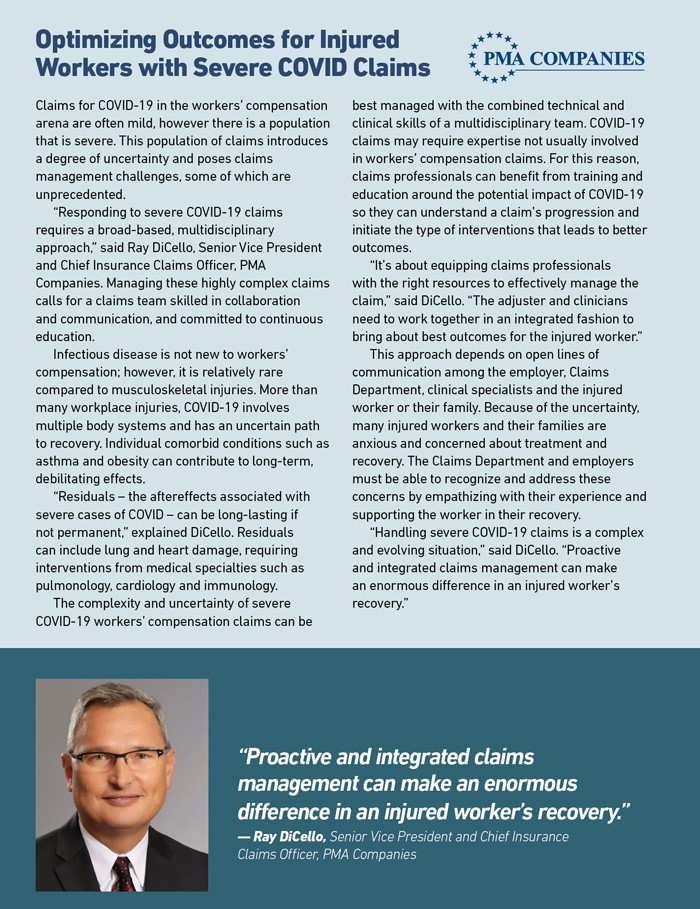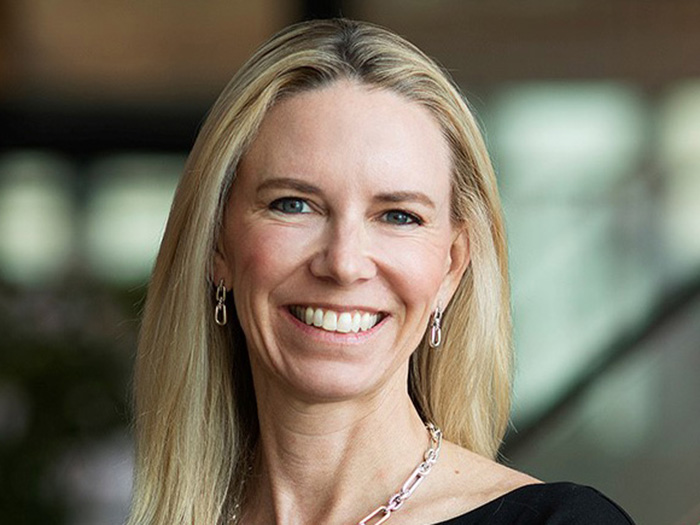How the City of Chicago Put Workers First During COVID and Exemplified Excellence During Crisis


For Tamika Puckett, chief risk officer for the City of Chicago, it was the day that the city closed its public schools that really drove home the severity of the COVID-19 pandemic.
It was mid-March. Snow was just starting to melt. Though the city would be hit with another late season snowstorm only a few days later, residents were excited to spend the first few days of wanner weather outside.
But when Chicago Mayor Lori Lightfoot announced that schools would be closed until April 30 to help combat the spread of the novel coronavirus, Puckett knew that the effects of the virus would soon ripple throughout America’s third largest city, forcing people to shelter inside their homes and sending the city scrambling.
“Once they closed school, I knew that it was just going to be a domino effect on everything else,” Puckett said.
Days later the Illinois Governor issued a stay-athome order, shutting down parks, banning even small gatherings and encouraging people to work from home. By the end of March, the city was seeing more than 1,000 COVID cases almost daily.
Most jobs at this point went entirely to remote work, but for City of Chicago employees that option wasn’t always available. Cities provide essential services — trash collection, emergency response, sanitation — that can’t be done remotely. Puckett knew thousands of city employees would still be reporting to work each day.
“We don’t often have pandemics that require the entire country to essentially shut down, or the world, for that matter,” she said.
“We had to consider the fact that more than half of our workforce would continue to operate pretty close to normal operation. Police, fire, and emergency operations were obviously going to continue their operations 2 4/7. And then, certain city services, such as water and sanitation services, had to continue as well.”
To help protect city workers and to curb the spread of the virus, Puckett and other City of Chicago employees rushed to implement increased safety protocols and to train employees on these new policies.
Their quick response was made possible by an interdepartmental team of city employees and a commitment to doing right by workers.
Keeping Essential Services Operating and Essential Workers Thriving
One of the city’s first priorities was creating new safety protocols to help essential workers protect themselves from the virus.
The city government mandated that all employees wear cloth face coverings, implemented new handwashing and sanitation procedures and worked with public health officials to make sure policies and procedures adhered to ever-changing best practices.
To help employees adhere to these new procedures, the team placed handwashing and hand sanitizing stations across the city. When the shutdowns began, establishments like restaurants and public restrooms, where workers might duck in to use the bathroom and wash their hands, were closed. The handwashing stations helped fill that gap for city employees.
Some city workers, like firefighters and emergency health care responders, were already used to taking additional protective measures and adapted to these changes quickly, but for others, it was a major culture shift.
Employees had questions about what types of masks they should be wearing and what other actions they could take to protect themselves from the virus. “There was a lot of culture change that had to take place there,” Puckett said.
Puckett worked closely with affected departments and the Department of Public Health to help make sure their employees were educated on what face coverings were acceptable and what employees should be doing to keep themselves safe.
Just as with any group of people, a few city employees were resistant to following some of the procedures.
”Just as you have members of the general public who have their own opinions about cloth face coverings and whether or not they provide any protection, we also have those same individuals within the workplace,” Puckett said.
Wearing a mask isn’t just about protecting oneself, however, it’s about protecting others. So, Puckett made sure that mask wearing policies and other protocols were enforced across departments.
An Enterprise-Wide Approach
The interdepartmental team of city leaders that Puckett organized at the beginning of the pandemic is one of the main reasons the city was able to implement and enforce new safety procedures so quickly and evenly.
The team, which used to meet daily, is led by the city’s human resources department and includes labor attorneys, facilities management staff, members of the safety team, and budget and finance team members, among others. The group now meets weekly to continue to manage the pandemic response.
“Creating this cross-functional team of city leaders for policy and decision-making purposes had not occurred consistently in the past,” Puckett said. “You have to have an inclusive and consistent response across the organization. That’s key.”
Despite its best efforts to contain the spread, the city has seen a few clusters of outbreaks among employees. Firehouses, in particular, are likely to be sites of these clusters since they require employees to spend hours, even days together in close contact.
This enterprise risk management approach to tackling the pandemic allows city officials to quickly address these clusters when they occur.
 Once a cluster is identified, facilities management staff go in and do a deep cleaning of any buildings that may be affected. Infected employees are then required to quarantine for 14 days before returning to work. Those who were in close contact with infected employees are tested to make sure that they don’t have the virus.
Once a cluster is identified, facilities management staff go in and do a deep cleaning of any buildings that may be affected. Infected employees are then required to quarantine for 14 days before returning to work. Those who were in close contact with infected employees are tested to make sure that they don’t have the virus.
If quarantined employees can’t work from home, the city has provisions in place so that they can still receive a paycheck while they’re out.
“Those are some of the things that we’ve done in order to really encourage employees to adhere to the guidelines,” Puckett said.
“You’re still going to get paid, but you have to adhere to the guidelines. You have to remain at home for those days to ensure that you don’t become sick, and essentially impact or infect any additional employees.”
Making sure employees have a form of paid sick leave that covers them during the pandemic, helps the city keep cluster outbreaks under control, and it also shows employees that the city cares about their well-being.
Leave options for quarantine are just one new form of leave that city employees have access to in the wake of the virus. The City of Chicago acted quickly to make sure employees had leave options if they needed to care for a sick family member or a child who was out of school, in line with the Families First Coronavirus Response Act and the CARES Act.
”We had a number of employees that had to quickly take advantage of those things in order to get home taken care of, so that they could work,” Puckett said.
For Puckett, additional safety measures, protecting employees and protecting the city’s finances by preventing the spread of COVID-19 and thus limiting workers’ comp claims, are all part of pulling together to defeat this virus.
Silos, she said, don’t work when you’re facing a crisis of this magnitude. Everyone needs to band together and support one another.
“If we’re operating in silos, we can be making decisions that have negative impacts on other departments or other operations within the organization,” she said.
“It’s important that you pull all those people in the room together and discuss those things, so that you can take an enterprise approach to identify and mitigate any risk that may come.” &










